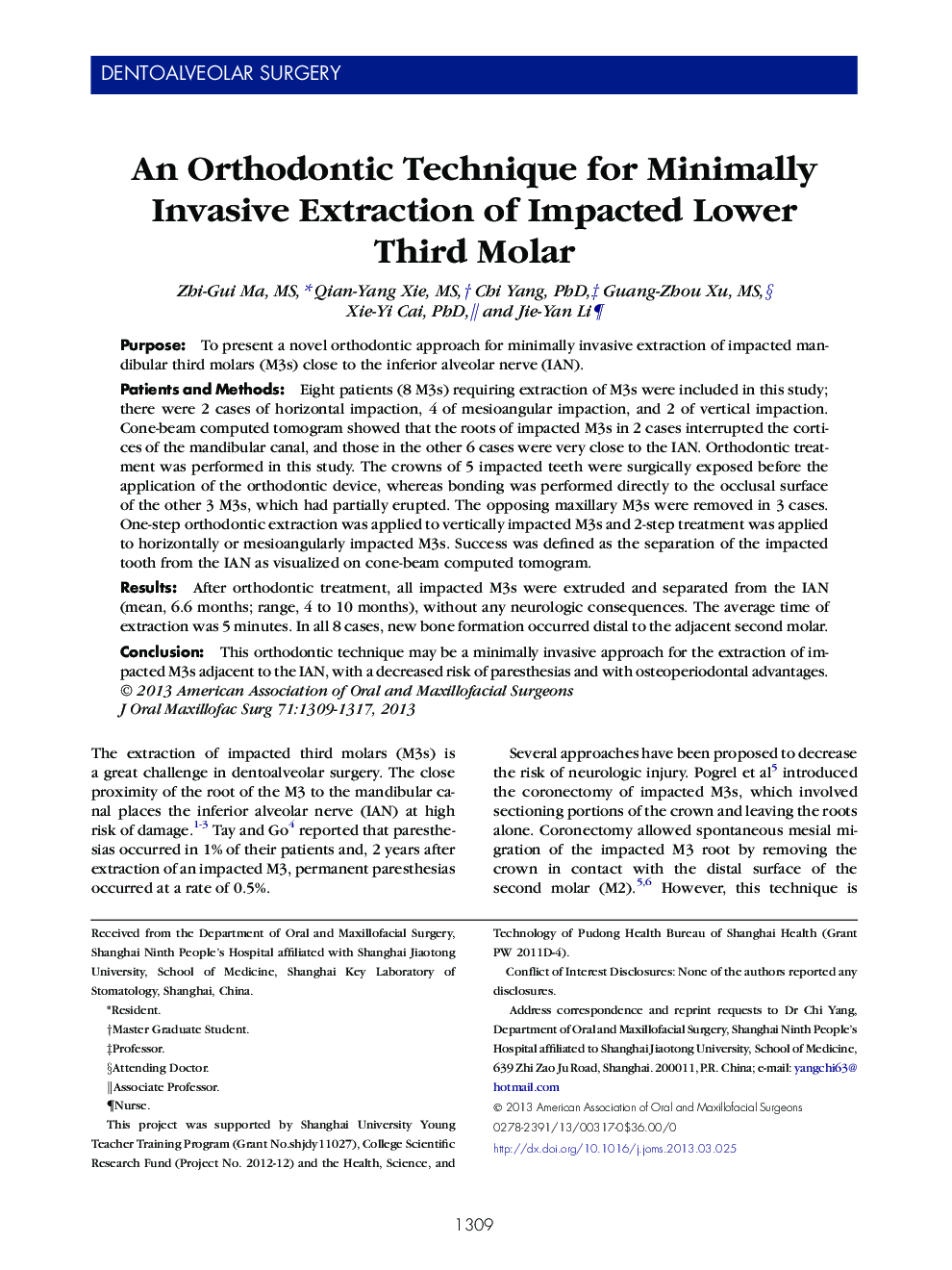| Article ID | Journal | Published Year | Pages | File Type |
|---|---|---|---|---|
| 3153234 | Journal of Oral and Maxillofacial Surgery | 2013 | 9 Pages |
PurposeTo present a novel orthodontic approach for minimally invasive extraction of impacted mandibular third molars (M3s) close to the inferior alveolar nerve (IAN).Patients and MethodsEight patients (8 M3s) requiring extraction of M3s were included in this study; there were 2 cases of horizontal impaction, 4 of mesioangular impaction, and 2 of vertical impaction. Cone-beam computed tomogram showed that the roots of impacted M3s in 2 cases interrupted the cortices of the mandibular canal, and those in the other 6 cases were very close to the IAN. Orthodontic treatment was performed in this study. The crowns of 5 impacted teeth were surgically exposed before the application of the orthodontic device, whereas bonding was performed directly to the occlusal surface of the other 3 M3s, which had partially erupted. The opposing maxillary M3s were removed in 3 cases. One-step orthodontic extraction was applied to vertically impacted M3s and 2-step treatment was applied to horizontally or mesioangularly impacted M3s. Success was defined as the separation of the impacted tooth from the IAN as visualized on cone-beam computed tomogram.ResultsAfter orthodontic treatment, all impacted M3s were extruded and separated from the IAN (mean, 6.6 months; range, 4 to 10 months), without any neurologic consequences. The average time of extraction was 5 minutes. In all 8 cases, new bone formation occurred distal to the adjacent second molar.ConclusionThis orthodontic technique may be a minimally invasive approach for the extraction of impacted M3s adjacent to the IAN, with a decreased risk of paresthesias and with osteoperiodontal advantages.
